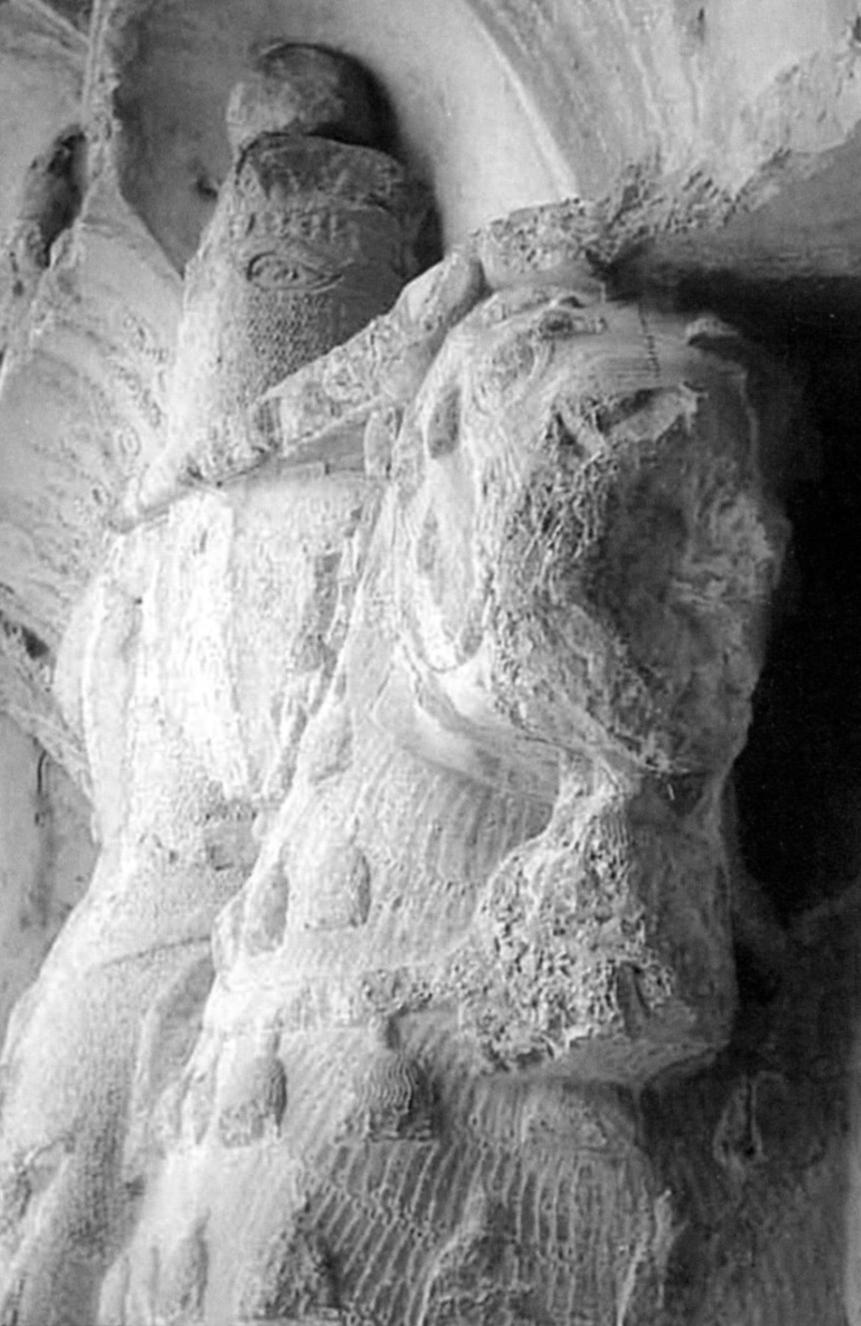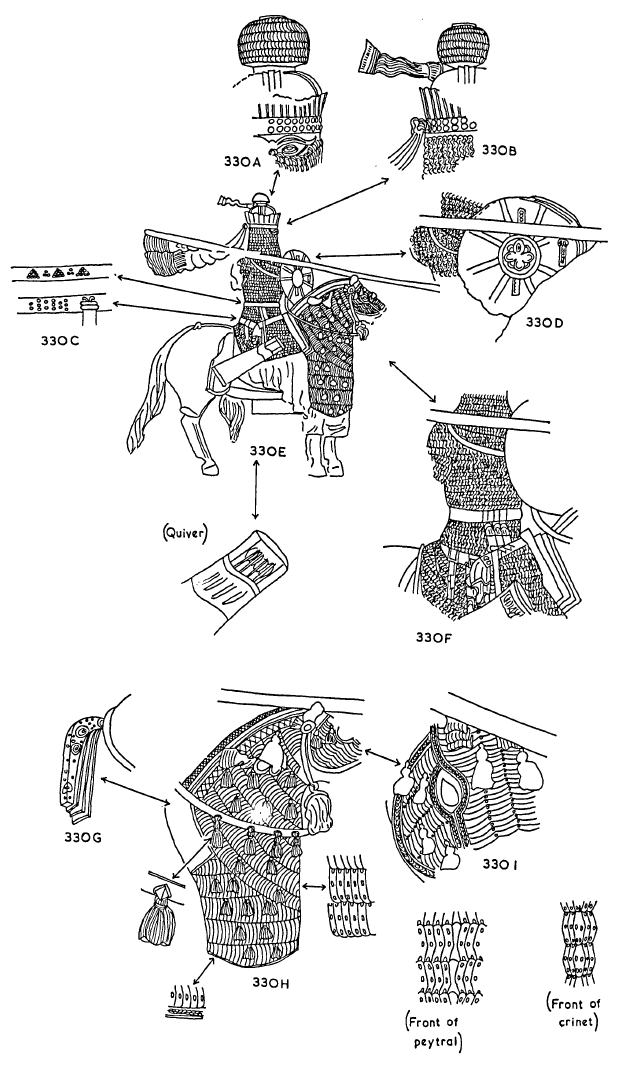Amazon Prime Student 6-month Trial

Create an Amazon Business Account
Front View of Carving of the Shah at Taq-i-Bustan
Khusru (Khosro, Chosroes) II, Aparvez (Parviz)

Front view of a carving of Sabdiz, the royal steed of Khosrow II at Tagh-e-Bostan, showing the armor protecting the chest. (Chamanara)
The Bargostvan or lamellar armor for horses developed out of the logical requirement to protect them from enemy missiles.
This necessity led to the eventual invention of the horse trapper by the Iranians and adoption by their ethnic kin in Persia.
The Dura Europos finds indicate that the Parthian horse was protected by a coat of scale armor of bronze or steel scales on a leather backing, with an opening for the saddle.
The horse had protection for its head (chamfron), neck (crinet) and legs (greaves).
It is not altogether clear if the Dura Europos find can he attributed to early Sassanian horses.
There is little evidence of very early trappers, except the horses of Ardeshir, Shapur, and an unknown nobleman (or prince) at Firuzabad.
The situation evidently changed by the mid-4th century as Heliodorus (IX, 14, 4)
describes Sassanian horses as being fully armored in addition to estivals and chamfrons.
The final display of Sassanian horse armor is seen on the horse of Khosrow II at Tagh-e-Bostan.
What is interesting is that horse armor is now "partial" in that, it affords lamellar protection only to the head, neck, and frontal chest area.
This was done to lighten overall weight and increase the steed's mobility in the frontal assault.
Source: pp.18-19, Sassanian Elite Cavalry AD 224-642 by Kaveh Farrokh
Referenced as figure 330 in The military technology of classical Islam by D Nicolle
330A to 330I. Rock-cut statue, early 7th century AD, Sassanian, in situ Ṭāq-i Bustān.
See Horse-Armour and Caparisons by David Nicolle, an extract from The military technology of classical Islam

Back to the profile image of this Carving of Shah Khusru (Khosro, Chosroes) II, Parviz, at Taq-i Bustan



